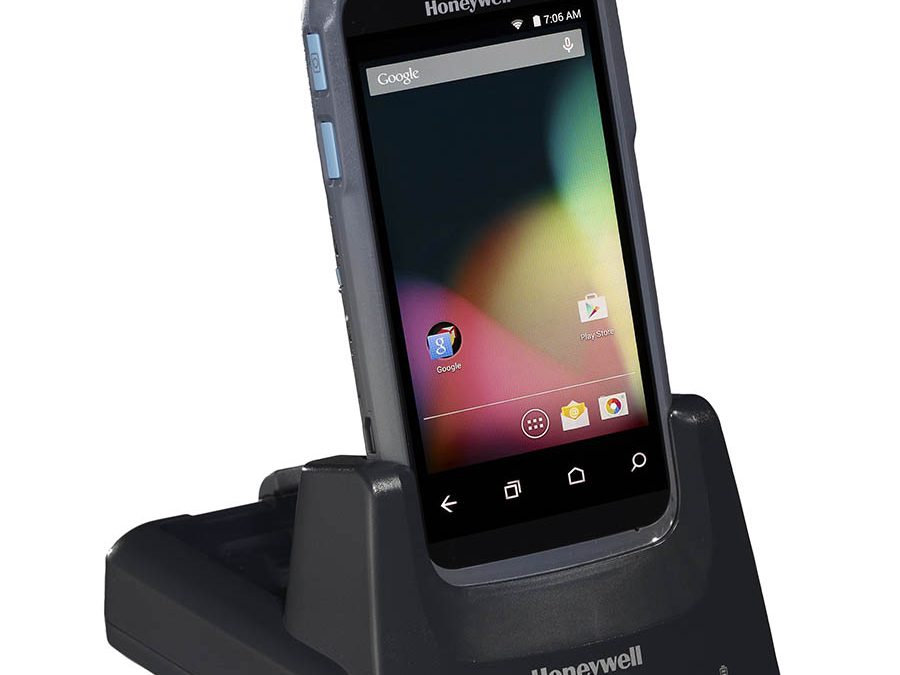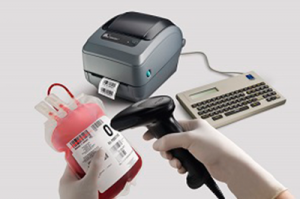
by Chelsea Williams | May 31, 2019 | Healthcare, Uncategorized
In busy hospital environments, patient care and safety are top priorities, but sometimes they can fall by the wayside when inefficient processes slow workflow rather than streamline it. Fortunately, with improvements in technology and healthcare, there are solutions available that effectively improve patient care while simultaneously saving time and increasing productivity.
Hospitals and other healthcare facilities can leverage automatic data collection technologies like mobile computers, barcode scanners, and more to keep patients safe and well cared for. Here are a few solutions that improve patient care:
Filled with cutting-edge solutions, download our complete product catalog here.
Barcoding
Patient misidentification can lead to disastrous consequences, and manual record-keeping inevitably leads to human error. Barcode wristbands are an easy, effective way to ensure that patients can always be identified accurately.
Patients aren’t the only ones being helped by barcoding technology. Hospitals and healthcare facilities can use barcode labels to identify and track specimens and supplies. This prevents against misidentification, reduces errors, and ensures that inventory is always accurate and up-to-date.
RFID
There are many advantages to real-time location data, and RFID technology is a great way to access these benefits. Real-time tracking can be used on campus for hospitals to track anything from surgical equipment to IT equipment.
Real-time tracking can improve patient safety by ensuring you are always aware of the supplies you have on-hand, and where they are located. When a patient needs a certain procedure, you want to make sure you have everything you need readily available. This also has a secondary cost benefit by helping you to avoid purchasing excess supplies.
Mobility
You can simultaneously improve patient care while you increase the efficiency of doctors and nurses by providing them with mobile devices. These work wonders at keeping workers connected both to each other, and to their patients. Connectivity provides instantaneous access to critical data, which frees up time for healthcare workers to focus more on providing quality care to patients. It also allows them to remotely monitor patients and be alerted in real-time when alarms are triggered, so they can respond promptly.
With the healthcare industry being as widespread and valued as it is, there is a major opportunity to increase efficiency and reduce errors using Honeywell connected technology. These solutions make it easier for healthcare providers to effectively track patients, medications, assets, and inventory, while also providing an auditable record of their activities to help ensure compliance with best practices.
One of the most recommended devices for healthcare professionals looking to improve patient care is the Honeywell Dolphin CT50h clinical smartphone. Specifically designed to help clinicians better focus on their patients, the CT50h provides mobile access to clinical systems, vital patient data, and other hospital staff. The rugged design makes it perfectly suited for busy environments, while the long battery lifespan ensures no downtime for a full 12-hour shift.
The CT50h also boasts unparalleled scanning performance for both 1D and 2D barcodes, which helps with correct patient identification as well as data entry, making it a great tool to help improve patient care.
Improving Care with Technology
As a member of the healthcare industry, your primary focus will always be on ensuring you provide your patients with the best care possible. To achieve that, you need to have the right tools and technology at your disposal. Manufacturers like Honeywell have gone to great lengths to help healthcare providers improve patient care and safety. If you are interested in learning what Honeywell devices can do for your operation, contact the team at Informs today.

by Chelsea Williams | Apr 26, 2017 | Healthcare, Manufacturing, Retail
The operating system that drives your enterprise is more than the core beneath your software apps. You’ll be investing deeply in a system that should support your business operations for many years ahead. The costs for licensing, software (now and apps to developed), hardware, and tech support require that you take a close look before you leap.
When Microsoft announced that it will no longer support CE/Windows Mobile in 2020, about 15 million users—90% of the enterprise market— were left with a quandary. Do you stick with that OS until you hit the dead end where you need support and it’s just not there? Do you rewrite your legacy systems? You could also make the OS migration to a system that will be supported in the long run. Android, for example, is picking up steam, not just as a result of Microsoft’s decision, but because developers are recognizing the potential for an enterprise-grade Android system.
What do we mean by “enterprise grade”? Well, as you know, Android is an open-source platform, which causes some IT professionals to cringe at the prospect of managing security. With a powered-up version, like Zebra’s MX Extensions, you gain the added security to maintain a safe environment beyond your single host system. Zebra has taken the desirable familiarity of Android and made it exponentially stronger and more secure.
The next factor in choosing the right operating system for your enterprise is the hardware compatibility. Can you acquire the computers, printers, scanners, and other devices that will work with your OS choice? No one wants to go out and replace all of their technology, so assess what you have. Which devices need to be replaced and which have more life? Is there a way to take a scalable approach to updating your hardware during the OS migration?
With Microsoft pulling out of the market in three years, you have time to ponder your choices, but unless you want to be pressured into making a sudden transition, develop your strategy now. Establish a timeline. If you need help identifying the components and evaluating your choices, contact Informs
by Chelsea Williams | Aug 16, 2016 | Healthcare
Blood transfusions are a routine part of hospital work. Yet, in hospitals using manual systems, it’s a process riddled with the potential for error – from a lab worker accidentally mislabeling a unit of blood, to the unit having to be discarded because the nurse has been held up en route from lab to ward.
Unfortunately, sometimes mistakes aren’t discovered until the unit is at the patient’s bedside and transfusion has begun, risking the patient suffering from an adverse reaction. In 2014, 764 serious adverse events and 346 serious adverse reactions were reported to the Medicines and Healthcare products Regulatory Agency (MHRA), in the UK alone.
Additionally, blood collection is time-consuming. Lab workers start by selecting a unit from the computer system and fetching the unit from stock. Next, they print out the correct label, call the ward, and wait to place the unit into the hands of the porter or nurse. Once a call is received in the ward from the lab, a nurse or porter is notified to go to the lab, sign for the unit manually, and then head back to the ward without delay. This ensures the transfusion is carried out in line with cold chain rules. When this same process is repeated from start to finish, hundreds of times a year, the hours spent in retrieving and carrying the blood unit add up to a significant portion of working hours.
While this process might work, ultimately, it doesn’t have to be like that.
Eliminating errors through automation
Automated blood tracking solutions can slash error rates to near-zero, while simultaneously creating huge time savings.
This automated solution creates robust workflows for your teams to follow with safety checks built in every step of the way, ensuring that your patients receive the best possible care. Now, when the lab worker selects a unit of blood, that unit is given a unique identifier assigned to a particular patient. Each patient receives a different identifier, ensuring that each unit receives its rightful patient. After the unit is selected, the lab worker prints and attaches a compatibility label, which includes the patient’s name and demographic details. Then the worker takes the unit to a secure, public-facing fridge, oftentimes found in a corridor.

The picture above shows how easily blood samples can be tracked using a barcode and scanner.
When the lab worker places the unit in the fridge, he or she use a mobile computer or scanner to scan the unit and the compatibility label, ensuring both are labeled correctly and accurately. Once the unit is in place, an electronic message is automatically sent, via barcode, to the ward nurse on his or her mobile device. The nurse then clicks to accept the job, goes to the fridge, and uses the barcode scanner to scan the barcode in the text message.
This unlocks the fridge automatically, while alerting the nurse where the unit of blood can be found in the fridge. The nurse then scans the unit to confirm collection, and the cold chain rules kick in. Now, if there’s a breach and the blood isn’t used within the appropriate time limit, the lab is automatically alerted.
Back on the ward, the senior nurse records a receipt using a computer on wheels. The final step is to scan both the patient’s wristband and the unit of blood: if the match is incorrect, an alert sounds so the process can be stopped. If everything is deemed okay, the transfusion can begin.
This automated solution makes absolutely sure that the blood unit being collected for each patient is the correct one. It also guarantees that only authorized personnel have access to the fridge.
Paperless, efficient and safe
While you can’t guarantee that staff will never make a mistake, this robust, automated blood tracking system makes it much harder for an error to slip through the cracks.
Furthermore, the time previously spent making phone calls, walking to and from the lab, and manually filling in labels is saved by using one seamless, paperless process that makes a blood unit’s journey from the lab to the ward as smooth as possible.
One final benefit that this automated solution offers is that it creates a complete audit trail. Each step of the unit’s journey is logged automatically, thus staff and management know who labelled and stored a particular unit, and who collected it and when they did so. Regulatory inspections become almost hassle-free; all the data you need is catalogued, saved, and searchable, so staff no longer have to wade through boxes of paper.
It’s not often that a solution can make dramatic improvements in patient safety, while improving productivity and reducing costs. Blood tracking is one example of an automated solution that does just that and hospitals typically see a return on investment within nine months. After the initial nine months, this system pays for itself many times over.
by Chelsea Williams | Jul 20, 2016 | Healthcare
The journey for a patient entering into your healthcare facility involves successfully overcoming many boundaries within and between facilities. Care is provided from the bedside to the pharmacy to the home, and patients expect this process to be as seamless and thorough as possible. Unfortunately, in society today, the process is often disjointed and inefficient, leading to frustration for both the patient and the healthcare staff.
At a time when budgets tend to be tight and the drive to improve patient care is high, focusing on how different healthcare functions can work together seamlessly is vital for your facility to thrive. By switching to a connected system of care, you can reduce waste, cut costs, and ultimately improve the quality of care you provide to your patients. Change has never been more necessary; and this new automated technology will allow you to transform the way care is delivered and patients are supported.
The digitization of each stage in the care process can lead to better visibility, accuracy, and efficiency, improving the overall patient care your facility provides. By providing your patients and staff with this comprehensive technology, your facility is able to carefully track and record everything into a digital profile, beginning with identification when your patient is first admitted, to the samples that are collected from your patient and the drugs administered to your patient. This technology not only improves the accuracy of each step, but also streamlines the entire process; making it more efficient and affording clinicians’ more of their valuable time to invest in their patients.
Let’s take a look at three of the key areas where technology can help to integrate, enabling truly seamless care.
- KEY AREA: Patient Identification at Admission
- In this day and age, 78% of hospitals still use handwritten wristbands, an alarmingly high percentage when you consider the inherent problems with this system of patient identification. While their use seems to be for good, unfortunately, handwritten wristbands are prone to inaccuracies and misidentification; meaning a mistake is made at the very first point at which patients enter your care. In comparison, printed barcode wristbands are far less prone to human error and offer staff immediate access to patient records.
- KEY AREA: Point of Care
- A digitized system can also transform the process of blood and specimen collection. Before the implementation of this technology, two fundamental problems with sample collection were failure to capture identification properly and failure to label samples at the bedside. This integrated technology is the solution to your problem! Utilizing printers and handheld computers enables a patient to be identified accurately, by scanning their barcoded wristband in conjunction with their electronic health record (EHR), which staff can access instantly, ensuring top-of-the-line care.
- KEY AREA: In the Laboratory
- When the lab receives a sample for testing, the implementation of a digitized system allows the lab to scan the barcode attached to the sample and update the patient’s EHR to confirm receipt of it. While running labs, this system allows for barcodes to be scanned again for ensured accuracy and test results that are automatically sent to the patient’s EHR. Overall, this comprehensive process is more accurate and efficient than ever before. By enabling staff to get test results quicker, you ensure that your staff is providing patients with the best possible care.
With the right technology at each stage of the healthcare journey, rigorous steps are simplified, made more accurate, and staff are given real-time information on their patients. Underpinning the entire process, positive patient ID reduces the risk of misidentification. Furthermore, the addition of pharmacy, drug administration, blood transfusion and discharge documentation to this system, enables your healthcare facilities to offer comprehensive, automated care via a seamlessly integrated solution which facilitates best practice.




Recent Comments